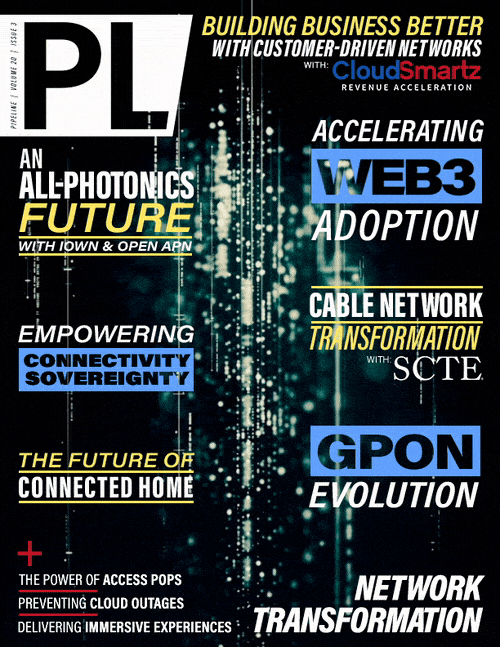Cable Network Transformation Focused
on Exceeding Customer Expectations
- Digitizing the optics between the hub and the node, resulting in greater reliability.
- Lower operational expenses associated with alignment and maintenance.
- Improved network visibility due to the distributed functionality. The intelligent network elements, deep in the network, are reporting back real-time performance telemetry.
- Providing a standardized node in the last mile not only supports HFC but can support multi-access technologies in the future. Modules for PON, Wi-Fi, and cellular can all be developed and housed in the DAA node.

Figure 2: Diagram of the Remote PHY version of DAASource: CableLabs
2. Band splits: sub-; mid-; and high-split
An HFC network’s capacity is driven by its frequency spectrum. In older networks, the spectrum started at 5 MHz and progressively ran up to 550, 750, and 860 MHz. Today’s networks extend up to 1 or 1.2 GHz (Figure 3 on next page). With DOCSIS® 4.0 support, extended-spectrum networks will run up to 1.8 GHz. Continued technological innovation may extend HFC networks to even higher frequencies. “Support” translates into all equipment along the HFC path, including the CMTS, fiber nodes, amplifiers, splitters, and CPE. The “band split” refers to where in the spectrum the downstream (hub to home) and upstream (home to hub) frequencies are assigned. Before two-way cable plants, there was no split, as all frequencies were dedicated to hub-to-home transmission. With the advent of interactive video and data over cable, spectrum needed to be reserved for upstream transmission. Five to 42 MHz was originally reserved for this purpose, with the downstream spectrum then starting at 54MHz (with a diplex filter in between to adequately partition the directional signals). As customer demands on the upstream have increased, the cable industry has looked for ways to assign more spectrum to the upstream. In the “mid-split” design, the upstream spectrum increases to 85 MHz, while in the “high-split” design, the spectrum increases to 204 MHz. DOCSIS® 4.0 will add other “ultra-split” options with the upstream band growing to 300 MHz, 396 MHz, 492 MHz, and 684 MHz. Gigabit per second upstream speeds per modem are now supported with these expanded spectral allocations. Many operators are now in the process of upgrading their networks to the mid-split and high-split designs.
3. Smart amplifiers
In access networks, amplifiers are electronic devices that increase the amplitude of electronic signals. Historically, the amplified levels were set by the technician at the time of installation. Periodically, a truck roll was needed to reset these levels (aka balancing the network). The smart amplifier is being specified and standardized by CableLabs & SCTE to eliminate these truck rolls. The amplifier will be network addressable, and standard functionality will include a YANG communications model for use between the amplifier and network operations center. Since the amplifier will be remotely accessible, remote configuration management (ability to remotely configure the device), performance management (telemetry on key metrics), and fault management (detection and isolation of device faults) will be supported. The SCTE Smart Amplifier Working Group meets bi-weekly on this program to complete the standardization process, now focused on the transponder to these amps, as vendors prepare to manufacture the devices.
4. Applying Artificial Intelligence to transformational projects
Artificial intelligence has jumped to the forefront of technology discussions around the world. The popularity of ChatGPT has brought these talks into the mainstream media. In the sphere of cable network transformation, operators have spun up their own AI/ML development teams and are busy applying artificial intelligence to all facets of the access network lifecycle: planning; construction; engineering; maintenance; and decommissioning. The SCTE Artificial Intelligence and Machine Learning Working



















